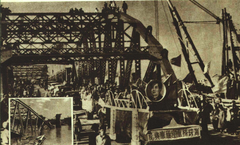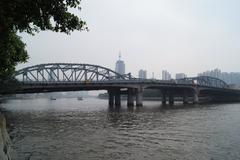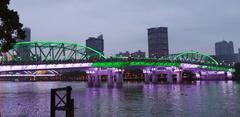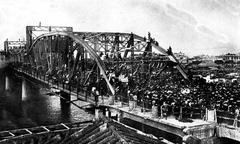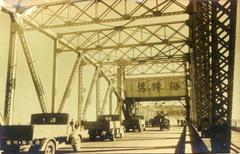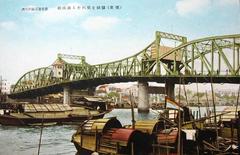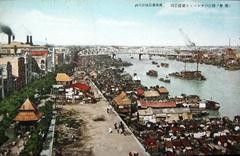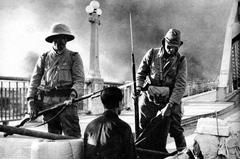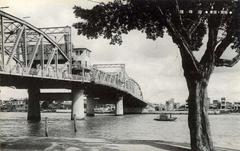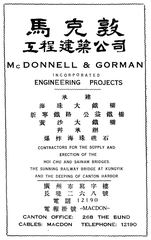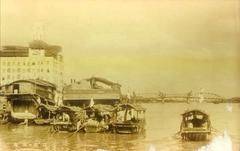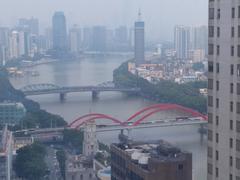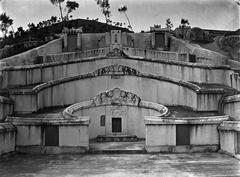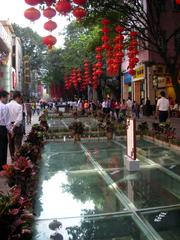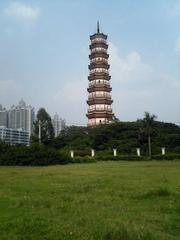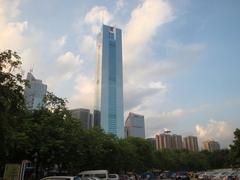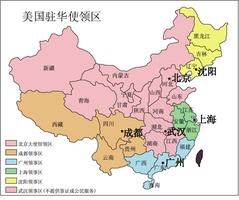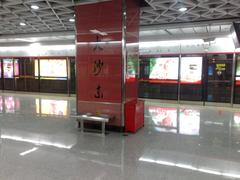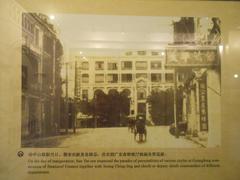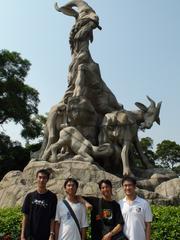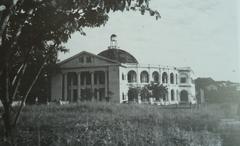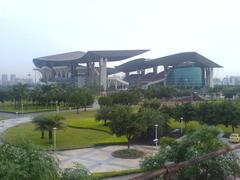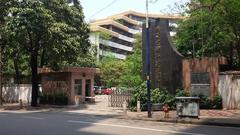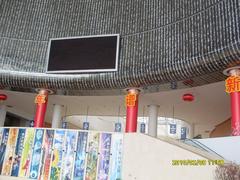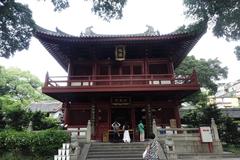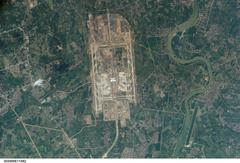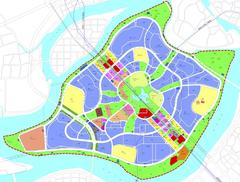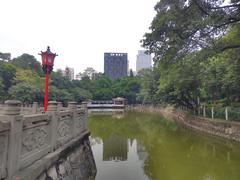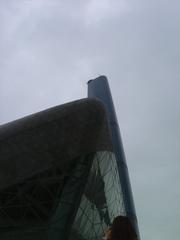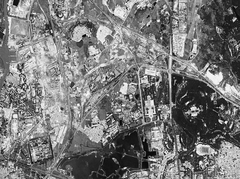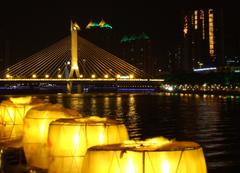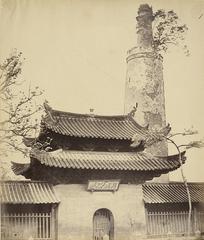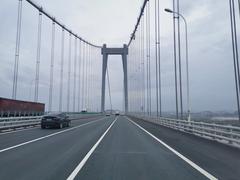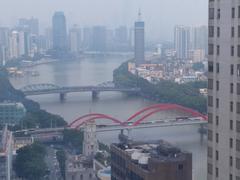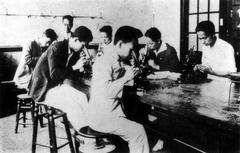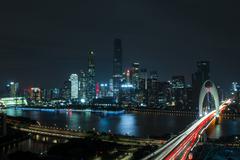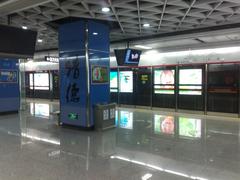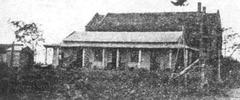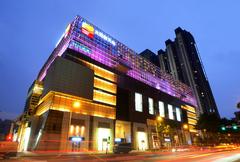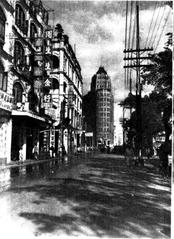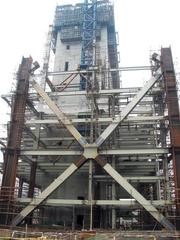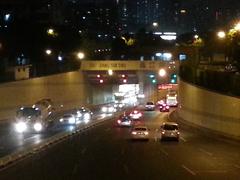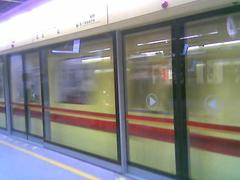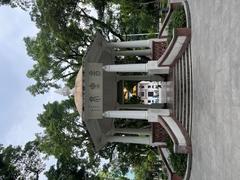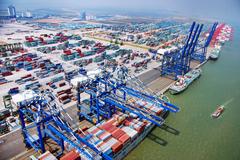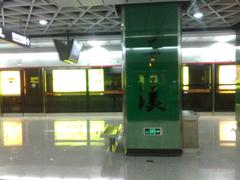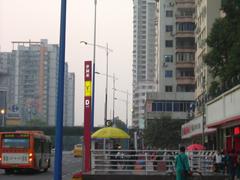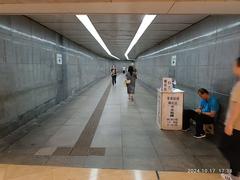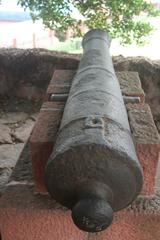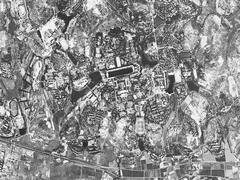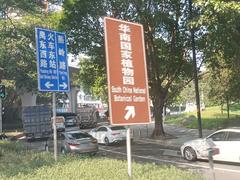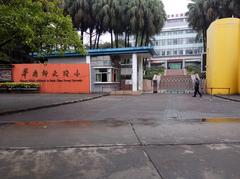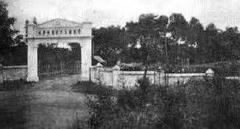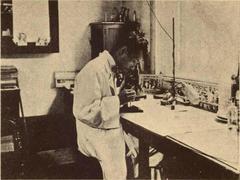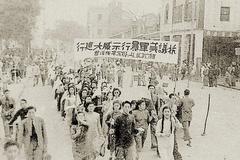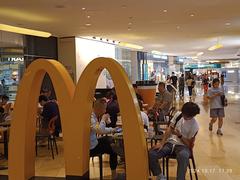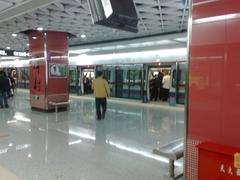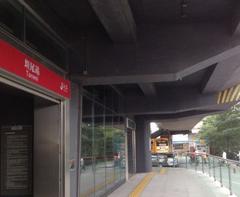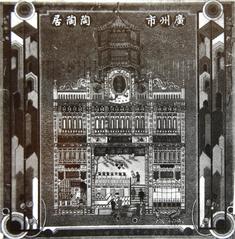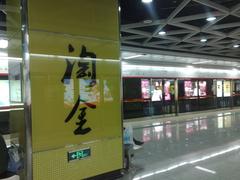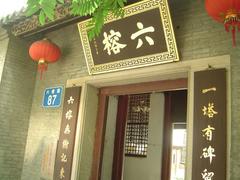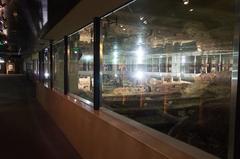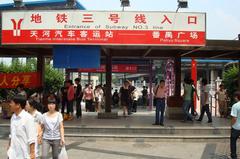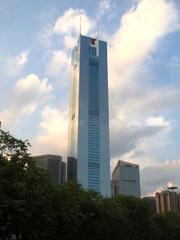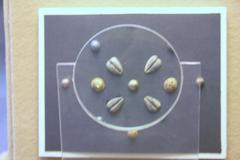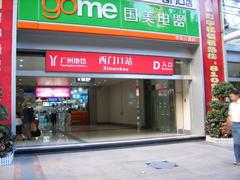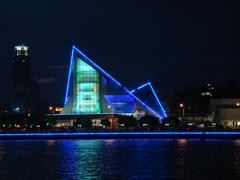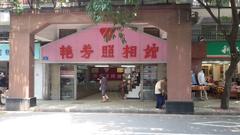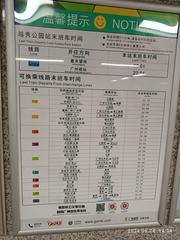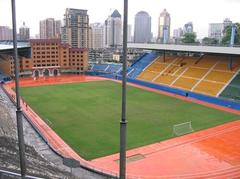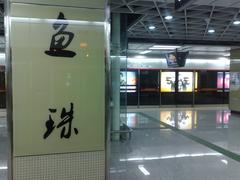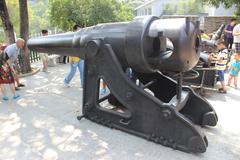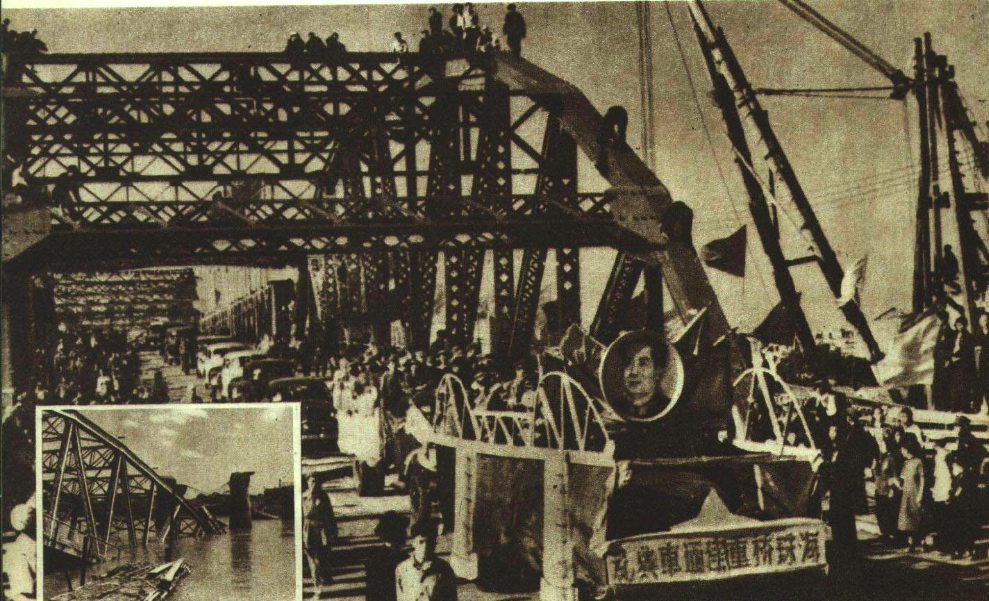
Haizhu Bridge Visiting Hours, Tickets, and Guide to Guangzhou Historical Sites
Date: 14/06/2025
Introduction
Haizhu Bridge, arching gracefully over the Pearl River, is not only a vital transportation link in Guangzhou but also an enduring emblem of the city’s history and evolution. As Guangzhou’s oldest steel bridge, it connects the Haizhu and Yuexiu districts, bridging the city’s past with its modern vibrancy. This guide offers a detailed look at Haizhu Bridge’s historical background, practical visiting information—such as hours and ticket details—accessibility, nearby attractions, travel tips, and answers to commonly asked questions. Whether you are a history enthusiast, a photographer, or a traveler seeking the essence of Guangzhou, Haizhu Bridge is an essential stop on your journey.
Historical Overview
Origins and Construction
The idea of building a bridge across the Pearl River in Guangzhou emerged during the late Qing Dynasty, reflecting the city’s growing need for north-south connectivity. However, it was not until 1929, under the guidance of provincial leader Chen Jitang, that the project gained momentum. The American Markton Company was commissioned to design and construct the bridge, which featured a three-hole, simply supported steel truss structure. Remarkably, its central span could be opened to allow large ships to pass, a crucial feature for the bustling port city (ssmuseum.net). The bridge was completed in 1933, stretching 356.67 meters in length and 18.3 meters in width, and opened to great public celebration.
Strategic Significance and Wartime Events
Haizhu Bridge played a critical role in Guangzhou’s urban development, facilitating the movement of people and commerce. Its strategic importance also made it a target during conflict. The bridge was damaged during the Second Sino-Japanese War in 1938, and again in 1949 when retreating Kuomintang forces destroyed sections to slow the advancing People’s Liberation Army (wikipedia).
Reconstruction and Renovation
Post-1949, the Guangzhou municipal government prioritized the bridge’s restoration. Reconstruction began in 1950, with engineers overcoming shortages of steel by salvaging materials and sourcing from Hong Kong. By November of that year, Haizhu Bridge was fully repaired, its center span fixed in place. Subsequent renovations have ensured its continued use and historical preservation:
- 1974: Routine maintenance and reinforcement.
- 1995: Introduction of a self-anchored sling system, enhancing structural stability (ssmuseum.net).
- 2012–2013: Major overhaul, raising the central height, increasing load capacity, improving accessibility, and adding commemorative feature walls.
- 2019: Further modernization and aesthetic enhancements (meerainfotech.com).
Cultural and Urban Impact
Recognized as one of the “Eight Sights of Yangcheng” in 1963, Haizhu Bridge has become an icon of Guangzhou’s resilience and modernization. Its central location makes it a focal point of urban life, connecting business districts and cultural sites. Over more than 90 years, the bridge has witnessed the city’s transformation, supporting economic growth and symbolizing the spirit of Guangzhou (chinawiki.net; meerainfotech.com).
Haizhu Bridge Visiting Hours and Tickets
- Visiting Hours: Open to the public 24 hours a day for both pedestrians and vehicles.
- Tickets: Haizhu Bridge requires no ticket or entry fee; access is completely free (Trip.com Moments).
- Night Cruises: For those interested in viewing the illuminated bridge, Pearl River night cruises are available nearby, with tickets ranging from ¥60–¥180 ($8–$25 USD).
Accessibility and Visitor Experience
Accessibility
Recent renovations have improved accessibility:
- Sidewalks and ramps accommodate wheelchair users and those with mobility challenges.
- Dedicated pedestrian paths on both sides are clearly separated from vehicular traffic.
- Cycling is permitted; however, caution is advised during rush hours.
How to Get There
- Metro: The nearest station is Haizhu Square (Line 2), a major interchange close to the northern end of the bridge (Wanderlog).
- Bus: Lines 12, 57, 61, and 128 serve stops near Haizhu Square and the bridge.
- Taxi/Ride-hailing: Widely available—enter “Haizhu Bridge” (海珠桥) as your destination.
- Walking/Cycling: Easily accessed from adjacent riverside promenades.
Best Time to Visit
- Spring (March–May) and Autumn (September–December) offer pleasant weather (15°C–25°C/59°F–77°F) and lower humidity (Best Time To Visit Guangzhou; China Discovery).
- Peak Season: October to December, during festivals and the Guangzhou International Light Festival, when the bridge is spectacularly illuminated.
- Avoid: Hot, humid summer (June–August) and major holidays (Chinese New Year, National Day) due to crowds (Travel China Guide).
What to Expect: Day and Night
Daytime
- Panoramic River Views: Enjoy clear vistas of the Pearl River, Canton Tower, and city skyline.
- Local Life: The bridge is a lively thoroughfare for pedestrians and cyclists.
- Photography: The steel truss structure and river activity offer excellent photo opportunities.
Nighttime
- Bridge Illuminations: At night, Haizhu Bridge is lit with colorful lights reflecting on the river (Trip.com Moments).
- Night Cruises: Embark on a Pearl River cruise for unique views of the illuminated cityscape.
- Nearby Nightlife: Party Pier Plaza and riverside venues offer dining and entertainment (Wanderlog).
Attractions and Activities Near Haizhu Bridge
- Haizhu Square: Northern end, with parks, fountains, sculptures, shopping, and dining.
- Riverside Promenades: Well-maintained walking and cycling paths with scenic views.
- Shamian Island: Historic colonial district nearby, ideal for architecture and cafes.
- Canton Tower: World-famous observation deck visible from the bridge, accessible via metro (China Discovery).
- Yuexiu Park: Large urban park with monuments and gardens, a short distance away.
Travel Tips
Safety and Accessibility
- Pedestrian Walkways: Clearly separated from traffic, well-maintained, but some sections may have steps.
- Cycling: Allowed, but exercise caution during busy periods.
- Wheelchair Access: Improved ramps, but check for uneven surfaces.
Weather Preparation
- Rainy Season (February–April): Bring an umbrella or raincoat.
- Summer: Lightweight clothing and hydration are essential.
- Winter: Mild; a light jacket suffices.
Photography
- Best Times: Dawn, dusk, and nighttime for dramatic lighting.
Local Etiquette
- Crowds: Expect more people during festivals and rush hour.
- Street Vendors: Common near bridge entrances—sample local snacks and souvenirs.
Language
- Signage: Bilingual (Chinese/English).
- Communication: Translation apps recommended.
Visa and Entry
- Visa-Free Transit: As of December 2024, citizens of 54 countries may enter Guangzhou visa-free for up to 10 days (Asia Odyssey Travel).
Special Events and Seasonal Highlights
- Guangzhou International Light Festival (Nov–Dec): Dazzling illuminations on the bridge and riverside (Best Time To Visit Guangzhou).
- Dragon Boat Festival (June): Races on the Pearl River, great views from the bridge.
- Mid-Autumn Festival: Cultural performances along the riverside.
Sample Itineraries
- Classic Walk: Start at Haizhu Square, cross the bridge, stroll the southern riverbank, and visit Shamian Island.
- Nightlife Tour: Sunset photos from the bridge, then dinner and entertainment at Party Pier Plaza.
- Photo Tour: Capture the bridge at dawn or dusk, then explore nearby attractions.
Facilities and Contacts
- Restrooms: Located at Haizhu Square and along the promenades.
- Emergency: Dial 110 (police), 120 (medical).
- Tourist Information: Available at major metro stations and attractions.
Dining Options
- Street Food: Try local snacks—roast chestnuts, steamed buns—sold by vendors near Haizhu Square.
- Restaurants: Abundant Cantonese and international choices nearby (China Discovery).
Frequently Asked Questions (FAQ)
Q: What are Haizhu Bridge visiting hours?
A: The bridge is open 24 hours daily.
Q: Is there an entry fee?
A: No, visiting Haizhu Bridge is free.
Q: How do I get there by public transport?
A: The closest metro station is Haizhu Square (Line 2). Buses and taxis are also available.
Q: Are guided tours available?
A: While no official tours focus solely on the bridge, many city tours include it.
Q: Can I cycle on the bridge?
A: Yes, but be mindful of traffic during peak times.
Q: When is the best time to visit?
A: Spring and autumn offer the most comfortable weather and best sightseeing.
Visuals and Interactive Elements
-
Images:
- Daytime view of Haizhu Bridge with Pearl River and Canton Tower (alt=“Haizhu Bridge daytime view with Pearl River and Canton Tower”)
- Nighttime view of the illuminated bridge (alt=“Haizhu Bridge illuminated at night with river reflections”)
- Panoramic shots from the pedestrian walkways
-
Map:
- Interactive map showing Haizhu Bridge, nearby metro/bus stops, and attractions
Internal Links Suggestions
- Guides to Guangzhou’s historical sites
- Pearl River Night Cruise articles
- Features on Shamian Island and Party Pier Plaza
Summary and Visitor Call to Action
Haizhu Bridge is more than an architectural feat—it’s a living symbol of Guangzhou’s resilience, innovation, and cultural vibrancy. Its open, free access and central location make it a must-see for visitors interested in both the city’s heritage and its dynamic modern life. Whether you’re admiring the view by day or marveling at the illuminations by night, Haizhu Bridge offers a unique window into Guangzhou’s story.
For tailored travel tips, event updates, and detailed guides, consult official tourism sites and consider downloading the Audiala app for real-time information. Let Haizhu Bridge be your starting point for exploring the rich tapestry of Guangzhou’s history and culture (ssmuseum.net, chinawiki.net, Haizhu Bridge celebrates 90th anniversary).
Sources and Further Reading
- ssmuseum.net
- Wikipedia
- Meerainfotech
- Haizhu Bridge Celebrates 90th Anniversary
- Trip.com Moments
- New Pedestrian Bridge to Enhance Guangzhou’s Urban Landscape
- Wanderlog
- Best Time To Visit Guangzhou
- China Discovery - Guangzhou Weather
- Travel China Guide
- Asia Odyssey Travel
